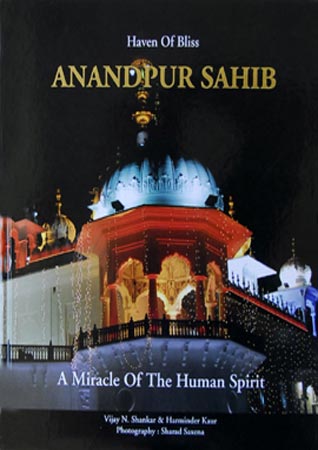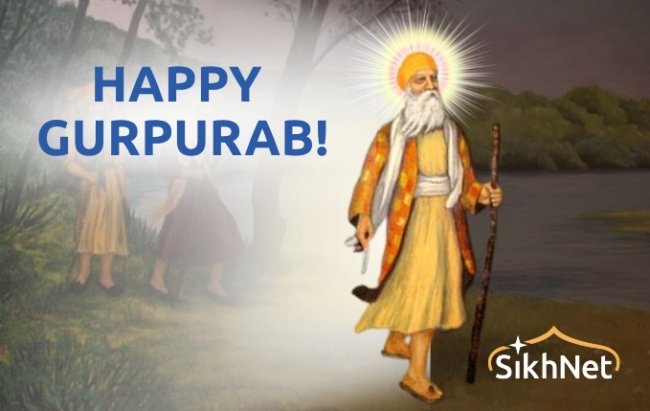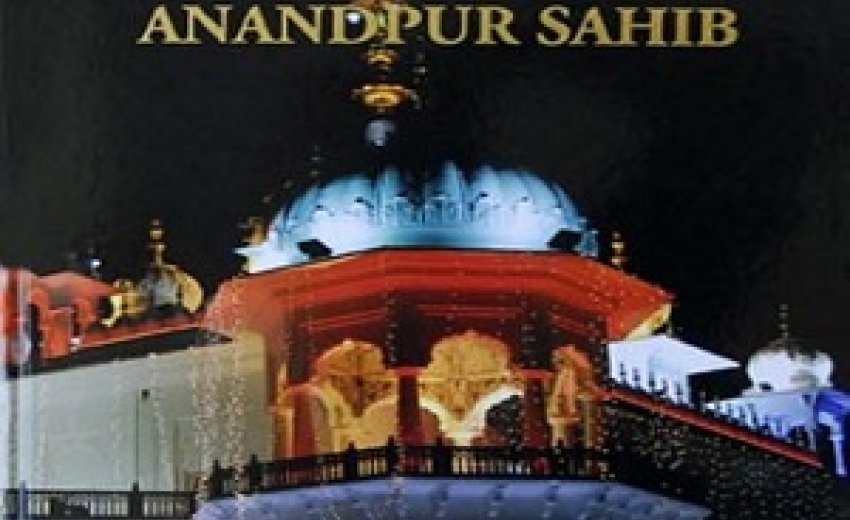Book Reviews
A Review by Nirmal Singh
 |
Title: Anandpur Sahib – A Miracle of The Human Spirit Author [s]: Vijay N Shankar & Harminder Kaur Photography: Sharad Saxena ISBN: 81 89692-02-X Publishers: Corporate Vision in collaboration with Lahore Book Shop, Delhi First Published: 2010 Price: `2,500.00 |
Contents:
1. Township With A Touch Of Divinity.
2. Footsteps In History.
3. Battles Of The Saint-Warriors.
4. Bow To The Sword Which Destroys Evil.
5. Fortresses Of Faith.
6. The Years Of Happiness.
7. The Creation Of The Khalsa.
8. Hola Mahalla.
9. Soldiers From A Mystic Past.
10. Anandpur Sahib Remembers.
Glossary.
This is a coffee table book – one more to quite a number that have been published in recent years – though possibly with a difference. It is third of a series by the same publishers on Sikh shrines and spirituality. Its 156 pages are full with pictures and the written text is an eyeful and informative. The authors, Vijay Sankar and Harminder Kaur, both journalists are involved with this series – Vijay authored ‘The Golden Temple: A Gift to Humanity’ and Harminder co-authored a similar book on Guru Granth Sahib.
There is quite a bit of emerging publications on Anandpur Sahib, no doubt in response to or in anticipation of interest generated by the string of centenary celebrations. A leaner coffee table book published earlier by UBS Publishers offers a glimpse into this sacred land and a monograph by Harjinder Singh Dilgeer, distributed by Singh Brothers gives brief insights into numerates other Gurdwaras in the surrounding vicinity and some lesser known incidents of conflict. This book seems to strike a balance in the presentation of factual and pictorial information for a generic reading interest.
Anandpur Sahib was settled by Guru Tegh Bahadur and Guru Gobind Singh spent the most eventful period of his life there. It is the hallowed place where the Guru revealed the order of Khalsa on the historic Baisakhi of 1699. The pahul ceremony was no doubt intended by the Guru to transform Sikhs into a cadre of saint soldiers who were ready and willing to take up arms in defense of righteousness if needed. Their resolve was tested very soon and the years that followed saw him engaged in a series of battles with the combine of Mughal forces and Hill Rajas.
The book tells the story of Anandpur which in its founding days was so intimately linked to the recurring battles into which Guru Gobind Singh was drawn either because he and his Sikhs were attacked or because his help was sought by the chief of a principality in resisting an unmerited attack. Several of these actions have been described by the Guru in Bachiter Natak and the authors have done well to quote relevant passages from the text in their narration of these battles.
Later, after the initiation of Khalsa, hostility against the Guru and his Sikhs increased and between 1700 & 1705, Anandpur saw the Guru give battle to various groups of attacking Mughal and Hill Rajas forces, eventually forcing him to evacuate Anandpur under assurance of safe passage by the Mughals swearing over the Koran and a missive from Aurangzeb. The assurance was belied and they were attacked and pursued when withdrawing. The book gives an account of these fateful events and cites quotes from Zafarnama admonishing Aurangzeb for this act of treachery as a base moral failure for a believing Muslim.
The soil of Anandpur has been witness to Sikh transformation and the Sikh struggle led by Guru Gobind Singh. Situated in the Shivalak foothills it still is a pretty place though in those times, its beautiful topography, fresh water streams and abundant forests must have made for an idyllic setting as a spiritual retreat. The book makes some references to Anadpur that was: ‘River Sutlej that used to flow near Anandgarh Fort now flows seven kilometers away. The Himaiti stream which used to protect Anandpur Sahib from Mughal invasions has disappeared. The hill on which the tent was put up for the initiation of Khalsa in 1699 does not exist anymore. The Hill on which Takht Kesgarh Sahib has been built is 10 feet less than it used to be at that time.’ [p. 33]
Anandpur Sahib has been and continues to be one of the most sacred Sikh sites and Gurdwara Kes Garh Sahib there is also one of the five Takhts, or seats of religious authority for global Sikhs. The text and pictures capture the serene piety of the devotees and the vibrancy of the annual hola mohalla celebrations. The illustrations include a number of paintings reproduced to provide supporting visual imagery to the text. The resource of paintings and sketches used has not been given. This information does not necessarily impart authenticity but if provided, may be helpful to discerning readers.
The text by the authors is professionally written and is readable. There are ample quotes from Guru Granth Sahib and Dasam Granth to support any assertion made and some also possibly to provide a flavor to the reader of its beauty and richness. Some of the relics and manuscripts with the Sodhi family of Anandpur Sahib find a mention in the book. Relics held in the toshakhana at Kesgarh Sahib are also described with their pictures. These include Saif, said to be a sword that originally belonged to Prophet Mohammed’s son in law and was presented by his successors to Aurangzeb when he went on Haj, later gifted by Bahadur Shah to Guru Gobind Singh.
Anandpur Sahib was protected by five Forts which were strategically located military centers. The picture spread of Fort Lohgarh on pages 68-69 is beautiful, its awe accentuated by the stark tree branches in the growing darkness of dusk when the picture must have been taken. Another spread of Taragarh Fort brings out some features of its vantage location as a look out. The Forts are not in the genre of major constructions like the Red Fort, Golconda Fort, Agra Fort or the Fort at Lahore that were used as royal residences in addition to providing secure areas and serve military contingencies.
In a chapter devoted to the creation of Khalsa, the authors have recounted in some detail the event of Baisakhi of 1699. Explaining the panj piarey being sacrificed and brought back to life, the authors talk of self surrender inherent in the Guru’s teachings by quoting the verse ‘pehlan maran kabool jeewan ki chhad aas, hoe sabhna ki ranka tau aao hamarey paas – first you have to rid yourself of egotism and attachment and abandon your self conceit and selfishness; only then you can come near me when you become the dust of everyone’s feet.’ Reads convoluted and confusing – could have been better worded! [p. 92-3]
As a part of a pictorial as well as textual description of the festivities at hola mohalla, the authors infer that ‘The entire concept and spirit of Hola Mohalla, starting as a take-off from the already popular Holi festival and then given a martial direction, is once again an example of the practical sagacity of Guru Gobind Singh who used creative and totally new ideas to guide his flock. Often there was an element of psychology in guiding his Sikhs and he succeeded greatly in giving a martial dimension to Sikh psyche.’ [p. 113-4] Rather simplistic but a credit because most coffee table type volumes don’t even stray into the prickly areas of trying to interpret concepts and traditions that reflect on intangibles like leadership traits.
In the overall the picture that the visuals present can leave one wondering about what Sikhi is about - beautiful Gurdwaras, gory battles, inspiring verses of peace and harmony, deep piety of devotees, glorification of arms, nihangs on a motor scooter in the midst of others on horses or elephants and the contemporary Sikhs crowding at festivals. It is quite a medley of beliefs, rituals, symbols and tradition that makes what we are - a blend of various hues like all other faith groups. To get the essence one has to get into depth. That would take more than a coffee table picture spread – but it might trigger interest, one hopes!
---------------Guru's abode in the hills
Reviewed by Roopinder Singh
DEVELOPED on land bought from the Rani of Kahlur for Rs 500, by Guru Teg Bahadur Sahib, Anandpur Sahib holds a particular reverence in Sikh ethos because of its close association with the last two Sikh Gurus. The ninth Guru spent many years there, both before and after he became Guru, this is from where he set out on his final journey to martyrdom in Delhi, where his head was cremated, and his young son anointed Guru. In these hills, the young Gobind Rai grew up, created the Khalsa, held court that patronised many poets and writers of renown, and also where many historic battles were fought.
The authors have given a succinct overview of the history of the place, and devoted a chapter to the martyrdom of Guru Tegh Bahadur. Various events have been recreated and connected with the relevant gurdwaras built at the sites where these happenings took place.
We have the magnificent Takht Sri Keshgarh Sahib, where the Guru created Khalsa, and a personal space, Gurdwara Anand Karaj Sahib, where Guru Gobind Rai's marriage with Mata Jito took place. It was at Anandpur Sahib that Bhai Kanahiya, a devout Sikh, was put up in front of Guru Gobind Singh by other Sikhs who accused him of providing medical help to enemy soldiers after a battle. When asked to explain his conduct, Bhai Kanahiya said he was merely following the Guru's injunction to help those who needed it and that he saw divinity in every face when he was tending to the wounded. The Guru blessed him and told him to continue with his work.
The betrayal of trust by hill Rajas after Guru Gobind Singh had been promised a safe passage from Anandpur Sahib resulted in the death of his two sons in the battlefield, and the separation of the other two sons and their grandmother, Mata Gujri, from the Guru. They were betrayed by a family retainer and subsequently arrested by the Governor of Sirhind, who offered them a choice of renouncing their religion or converting. They remained steadfast in their belief and were bricked alive.
Hola Mohalla is where festivity, color and martial spirit come together. It was first celebrated in 1701 by Guru Gobind Singh and we have lovely pictures by Sharad Saxena that show the event as it unfolds, including some of really cute children dressed up in traditional finery. The captions are informative, though one searches in vain for the names of the painters whose works feature in the book.
Takht Sri Keshgarh Sahib is a repository of much of Sikh heritage, including weapons of the Gurus and the Hukamnamas, epistles, issued by them. This is where we have the original Khanda with which Amrit was prepared for the Khalsa and the Nagina which is shaped like a corkscrew, used to pierce the armour of an armored attack elephant, a gun from Lahore that was presented to Guru Gobind Singh and of special significance is the saif, or the sword of Hazrat Ali, the son-in-law of Prophet Mohammad. The saif was presented by Emperor Bahadur Shah to Guru Gobind Singh. The authors have provided a glossary, though a bibliography would have added to the value of the volume.
The Sodhi families of Anandpur Sahib are a living legacy of the city. Some trace their lineage to the families of the Gurus, and Sodhi families were among the prominent landlords of the area. It is not widely known that the town of Anandpur Sahib is also one of the oldest municipalities of the region. For many years, the president of the Municipal Committee was Sodhi Haravtar Singh, who passed away in July this year at the age of 94. The book has his picture as well as some information on the person, who had been intimately connected with the city of his birth. He was the father of Justice R.S. Sodhi, former Judge of the Delhi High Court, and Vikram Sodhi, a businessman and polo player.
Many memories are jogged, as one flips the pages of the book and explores the past of Anandpur Sahib, which is a two-hour drive from Chandigarh. This volume gives us a colourful window to one of the more important towns of the Sikhs, even as it whets our appetite for more.

